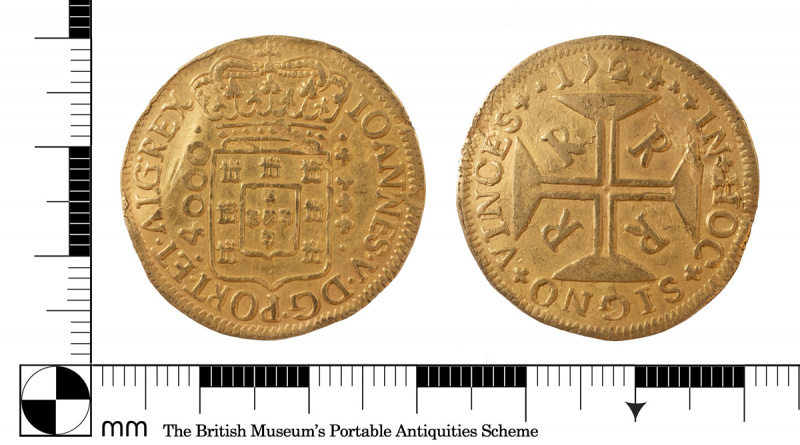Moidore of João V
A 4000 reis of João V, dated 1724, which was minted in the Portuguese colony of Brazil. These coins became known as moidore, which was a contraction of moeda de ouro, meaning “gold coin.
The moidore was introduced in the reign of Pedro II (1683-1706) and discontinued production in Portugal in 1732 during the reign of João V. Its production in Brazil continued for much longer. It was notable for the huge sphere of circulation and spread through trading channels to Ireland and England.
Brazilian gold
Significant gold discoveries were made in Brazil in the 1690s and throughout the 18th century. This led to a mint being set up in Rio de Janeiro in 1702 . As the amount of gold being mined increased, more and more was being sent to Britain both as moidores and unrefined.
In 1717 Sir Isaac Newton effectively moved Britain onto the gold standard, which was to last some 200 years, but overvaluing gold against silver. The Bank of England began to significantly increase its gold reserves from 235,000 ounces in 1720 to 900,000 by 1740. This was largely the result of imports from Brazil which was by far the largest producer of gold at the time.
Circulation in Britain

Photo: Birmingham Museums Trust CC By SA2.0
The moidore was common in Britain and traded at 27 shillings in Britain. In the 18th century many British maker’s made sets of weights to include not only the guinea but also Portuguese moidore and other gold coins. An example of a weight for the moidore, showing “S 27” for 27 shillings is shown here.
Ellerby Hoard
You may recall from our report on the Ellerby Hoard that 266 gold coins from James I to George 1 were found in 2019 by a couple doing some kitchen renovation. An unusual inclusion in the hoard was a 1721 moidore and although the rest of the hoard was disclaimed as treasure (sold by Spink for £754,000) this coin was retained by the British museum.

